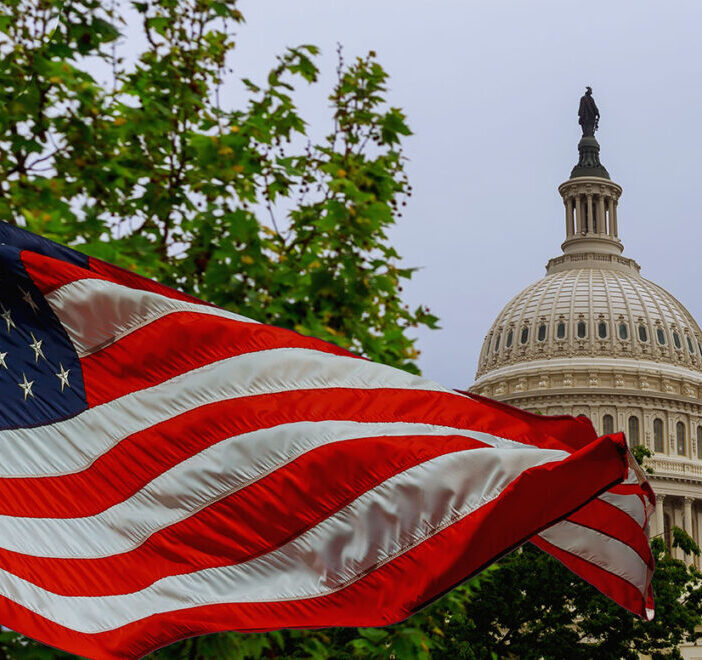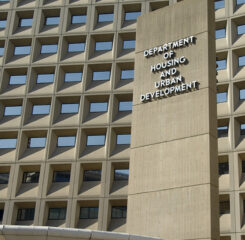FY 2022 SNF PPS Proposed Rule Released
The FY 2022 Skilled Nursing Facility (SNF) Prospective Payment System (PPS) rule was posted on the Federal Register public inspection site on April 8. The rule is scheduled to be published to the Federal Register on April 15. In addition to announcing a 1.3% payment update for FY 2022, the rule proposes updates related to the patient-drive payment model (PDPM), SNF consolidated billing, and the SNF Quality Reporting Program (QRP) and Value-Based Payment (VBP) program. Comments on the rule are due June 7. An overview of proposals follows below.
PPS Payment Updates
CMS has announced a 1.3% payment rate update for FY 2022. This rate is based on a 2.3% market basket update, less a 0.8% forecast error adjustment and a 0.2% multifactor productivity adjustment. These adjustments combined with a $1.2 million decrease due to adjustments to SNF consolidated billing (outlined below) result in approximately $444 million in Medicare Part A payments to SNFs for FY 2022. The rule also proposes to rebase and revise the market basket index, updating the base year from 2014 to 2018, the year for which the most recent Medicare cost report data is available, to improve payment accuracy.
We note that currently, the forecast error adjustment uses a 0.5% threshold, meaning that adjustments are made if the difference between the forecasted and actual market basket indices exceeds 0.5%. CMS is considering updating this methodology in future rulemaking, either eliminating the forecast error adjustment or increasing the threshold from 0.5 to 1.0% and is soliciting feedback on this issue.
Consolidated Billing Exclusions
CMS proposes an additional category of excluded codes from SNF consolidated billing related to blood clotting factors and items and services related to these factors. The HCPCS codes are as follows: J7170, J7175, J7177–J7183, J7185–J7190, J7192–J7195, J7198–J7203, J7205, and J7207– J7211. In accordance with section 1888(e)(2)(A)(iii) of the Social Security Act, CMS has proposed a proportional reduction of $0.02 in unadjusted urban and rural rates. Exclusions and rate reductions would apply to items and services furnished on or after October 1, 2021.
Additionally, CMS is seeking comment on Healthcare Common Procedure Coding System (HCPCS) codes in any of the 5 service categories qualifying for exclusion for consolidated billing and the rationale for such exclusions. These categories are chemotherapy items, chemotherapy administration services, radioisotope services, customized prosthetic services, and the new category, blood clotting factors. The latest list of excluded codes can be found on the SNF Consolidated Billing website at https://www.cms.gov/Medicare/Billing/SNFConsolidatedBilling.
Patient-Driven Payment Model
CMS is proposing several changes to the patient-driven payment model (PDPM) ICD-10 code mappings and lists. Proposed changes include:
- Reassignment of 2 types of sickle-cell disease from the category of “Medical Management” to “Return to Provider”.
- Reassignment of 3 types of esophageal conditions from “Return to Provider” to “Medical Management.”
- Reassignment of the COVID-related code M35.81 Multisystem inflammatory syndrome from “Non-Surgical Orthopedic/Musculoskeletal” to “Medical Management.”
- Reassignment of 3 types of neonatal cerebral infarction from “Return to Provider” to “Acute Neurologic.”
- Reassignment of U07.0 Vaping-related disorder from “Return to Provider” to “Pulmonary.”
- Reassignment of G93.1 Anoxic brain damage, not elsewhere classified from “Return to Provider” to “Acute Neurologic.”
CMS is also seeking comment on a proposal to the PDPM parity adjustment. Analysis of FY 2020 data shows a significant increase (approximately 5%) in overall payment levels under the SNF PPS. Typically, this would trigger a parity adjustment in order to maintain budget neutrality, as occurred in FY 2012 in response to the transition from RUG-III to RUG-IV. However, CMS notes that due to the impact of the COVID-19 public health emergency on both utilization and assessments, as well as changes in therapy utilization rates related to PDPM implementation, the methodology applied for the FY 2012 parity adjustment may not yield an accurate recalibration in this circumstance.
For this reason, CMS is seeking comment on the parity adjustment methodology, which would include using FY 2019 RUG-IV case mix distribution to calculate expected FY 2020 payments if PDPM had not been implemented and excluding from recalibration calculations a FY 2020 subset SNF population that includes residents who were diagnosed with COVID-19 and residents who utilized one of the 2 public health emergency waivers related to SNF services, the qualifying hospital stay waiver and the benefit period waiver. Applying this methodology for FY 2022 would result in a 5% reduction in SNF spending, approximately $1.7 billion.
CMS notes that should the parity adjustment be finalized as proposed, they are considering a number of potential mitigation strategies to help ease the financial burden that such a significant adjustment would pose to providers. Strategies include delayed implementation, in which the reduction would be delayed to a later year, or phased implementation in which the reduction would be divided and applied over 2 more years. A combination of a delayed and phased implementation may also be considered and CMS is seeking feedback on these potential strategies.
SNF Quality Reporting Program
CMS proposes the adoption of 2 new measures for the SNF Quality Reporting Program (QRP) beginning with FY 2023: SNF Healthcare-Associated Infections (HAI) Requiring Hospitalization measure and the COVID-19 Vaccination Coverage Among Healthcare Personnel measure.
The proposed HAI measure is an outcomes measure based on Medicare claims data. Rather than targeting specific measures, this measure would target all HAIs serious enough to require hospitalization. The measure is not currently endorsed by the National Quality Forum (NQF), though CMS intends to submit the measure for future NQF endorsement. If finalized, this measure would be adopted for FY 2023 and would be publicly reported using 4 quarters of claims data.
The proposed healthcare personnel vaccination measure is a process measure based on data reported by the SNF through the National Healthcare Safety Network (NHSN) system. The measure is not currently endorsed, though CMS in collaboration with the Centers for Disease Control and Prevention (CDC) intends to submit the measure for future NQF endorsement. We note that similar measures have been adopted in the In-patient Rehabilitation Facility (IRF) QRP and Long-Term Care Hospital (LTCH) QRP in FY 2014 and FY 2013, respectively, to measure flu vaccination rates in healthcare personnel.
All healthcare personnel eligible to work at least one day in the SNF during the reporting period would be included in the denominator of the measure. The numerator would consist of eligible healthcare personnel who received a complete vaccination course. The measure would be adopted for FY 2023, with data submission beginning with the period October 1, 2021 through December 31, 2021. Data would be publicly reported on Care Compare immediately with quarterly data accumulating at each quarterly refresh until 4 quarters of data were available. The measure would then be reported using 4 quarters of data going forward.
Additionally, CMS proposes to update the existing Transfer of Health Information to the Patient – Post-Acute Care measure by excluding from the denominator residents discharged home under the care of an organized home health or hospice service. As this measure was adopted as a standardized measure across IRF QRP, LTCH QRP, SNF QRP, and Home Health QRP, eliminating this subset of residents from the denominator of the SNF QRP will align the measure with measures utilized in other QRPs and avoid the risk of duplicate data.
Lastly, CMS has included 2 Requests for Information (RFIs) in the proposed rule related to the SNF QRP program. CMS seeks feedback on the adoption of digital quality measures and related processes. These measures include calculations that process digital data, such as electronic health record data, to produce measure scores in addition to advancing initiatives around interoperability.
CMS additionally seeks feedback on strategies to address health equity including the adoption of health equity measures, standardized patient assessment data elements (SPADES), and recommendations for how CMS can promote health equity outcomes among SNF residents.
Lastly, CMS proposes methodology to adjust the number of quarters publicly reported for SNF QRP due to the COVID-19 public health emergency. Affected Care Compare refreshes would be those occurring January 2022 through July 2023.
SNF Valued-Based Purchasing Program
Acknowledging the challenges posed by the COVID-19 pandemic, CMS said it does not wish to reward nor penalize SNFs for their performance during the public health emergency (PHE) under the SNF Value Based Purchasing (VBP) program but the result of its proposal would be a 0.8% cut for nearly all SNFs. CMS is required by the SNF VBP law to annually create an incentive pool by withholding 2% of SNF Medicare FFS rates and only permits it to return 50-70% of these funds. LeadingAge notes that any reduction to SNF rates at this financially precarious time is disappointing after a trying year for providers – financially, clinically and emotionally.
Under the proposed rule, CMS seeks certain flexibilities for the duration of the current COVID-19 PHE, allowing it to calculate the Skilled Nursing Facility Readmission Measure (SNFRM) for FY2022 but not use it for determining performance scores or incentive payments under the SNF VBP program. Instead, it would assign the same performance score of zero to all SNFs, which would result in effectively a 0.8% reduction in Medicare FFS rates for those facilities. This is based upon returning 60% of the funds to providers. Low volume eligible SNFs, however, would continue to receive a net neutral rate adjustment (or no rate reduction) when they have fewer than 25 eligible stays as permitted under previously adopted policies. To determine FY2022 SNFRM calculations, CMS will compare a performance period that includes April 1, 2019 – December 31, 2019 plus July 1, 2020 – September 30,2020 readmissions data. The baseline period remains FY2018. CMS considered alternative approaches such as using less than a full calendar year’s worth of data but ultimately felt such an approach would provide an accurate reflection of SNF readmission performance.
CMS proposes to suppress the SNFRM for the duration of the PHE based on a proposed suppression policy. To guide its decision making regarding when to suppress SNFRM, CMS has identified a list of Measure Suppression Factors that it plans to use to determine circumstances that would warrant the suppression and intends to apply these factors in other VBP programs for other provider types like hospitals. Suppression would occur when one or more of the following factors occur:
- Significant deviation in national performance on the measure.
- Clinical proximity of the measure’s focus to the relevant disease, pathogen, or health impacts of the PHE for COVID-19.
- Rapid or unprecedented changes in guidelines, practice, treatment, drugs, equipment, tools, materials or generally-accepted scientific understanding of the nature or biological pathway of a disease or pathogen.
- Significant national shortages or rapid unprecedented changes in healthcare personnel; supplies, equipment, or materials; patient volumes or facility-level case mix (CMS indicates this factor is applicable for FY2022)
CMS found in analyzing the available data that the PHE presented some anomalies in care delivery patterns compared to pre-COVID-19 data with 25% fewer SNF admissions and 26% fewer hospital readmissions from the SNF. CMS data indicates that nearly 10% of SNF residents between July and September 2020 had a current or prior COVID-19 diagnoses. For these reasons, CMS believes SNFRM variation is the result of COVID-19 prevalence and not quality of care delivered. Based upon these analyses, CMS will be evaluating whether the SNFRM needs to be revised to account for residents with a COVID-19 diagnosis, and to reflect changes in care delivery patterns that resulted from the PHE. Nonetheless, CMS plans to submit the SNF Potentially Preventable Readmission (SNFPPR) measure (the long-awaited successor to SNFRM) to the National Quality Forum in Fall 2021 for approval. NQF endorsement is needed for CMS to finally transition to using the SNFPPR measure for calculating the SNF VBP incentive payments.
CMS is interested in feedback on whether it should have the flexibility to suppress quality measures for future PHEs without rulemaking and other alternative suggestions to this blanket suppression approach.
Even though SNFRM performance won’t be used for incentive payment purposes under SNF VBP, a SNF’s performance on the measure will still be made public on Care Compare, as required by law, even though CMS state in the proposed rule that it is, “concerned that the SNF readmission measure scores are distorted” by the COVID-19 pandemic and note “inequities could be especially pronounced for SNFs that have treated a large number of COVID-19 patients.” CMS says it will clearly indicate that these data are being suppressed for scoring and rate adjustments due to changes in SNF patient volume and case mix during the performance period. Even with that caveat, it is unclear how the calculated rates might be perceived by consumers. SNFs would also continue to receive quarterly confidential feedback reports based upon their SNFRM performance during FY2022.
CMS seeks input on potential future measures it might add to the SNF VBP, as is allowed by recent changes in law made under the Consolidated Appropriations Act of 2021, which permit up to 9 measures to be added impacting payments on or after FY2024. CMS is considering current SNF Quality Reporting Program measures, all-payer measures, and measures that apply to all populations served in a nursing home (both long and short stay). CMS specifically calls out staff turnover measures using payroll based journal data and CORE Q Patient Safety measures for consideration.CMS has identified 15 potential measures under the following categories:
- Minimum data set (MDS) measures
- Claims-based measures
- Outcomes measures
- Customer satisfaction measures similar to the CAHPS survey
- Payroll-based journal
Other proposed changes include:
- Revising FY2023 risk adjustment by limiting it to a 90-day look-back period (currently 365-days) prior to discharge from hospital to SNF, which allows CMS to not mix COVID-19 and pre-COVID data. CMS modeling indicates similar results are achieved when the current and proposed approaches were compared using FY2019 data.
- Eliminating the option for providers to correct underlying administrative claims data used to calculate the rates as part of the Phase One Review and Correction policy beginning October 1, 2021. Providers would only be able to seek corrections to errors made by CMS or its contractors when calculating the measure. As part of this change, CMS would institute a 3-month claims runout period following the last index admission. This would allow providers to correct underlying data entries between the close of the performance period and three months following.
- Confirms there will be no changes to the FY2023 performance period (October 1, 2020 – September 30, 2021) and baseline period (FY2019) as proposed in last year’s rule.
- However, FY 2024 rates will be based upon FY2022 performance compared to FY2019 as baseline data to ensure a full calendar year of data.
CMS will be accepting comments until June 7, 2021. LeadingAge will be soliciting input from members on the proposed SNF PPS rules including the sections on VBP and QRP in coming weeks and submitting comments on the rule on behalf of members by the deadline.

Most Recommended
October 15, 2025
 Shutdown Week Three: Impact of Ongoing Closure on Affordable Housing
Shutdown Week Three: Impact of Ongoing Closure on Affordable Housing
December 10, 2025
Fiscal Year (FY) Funding 2026
October 07, 2025
Immigrant Workforce Matching Program Brings Workforce Relief
Recently Added
December 19, 2025
House Moves Forward on Affordable Housing Reforms
December 19, 2025
White House Cannabis EO Paves Way for Research, Access
December 19, 2025
LeadingAge Urges DHS to Maintain "Public Charge" Guardrails
December 18, 2025



